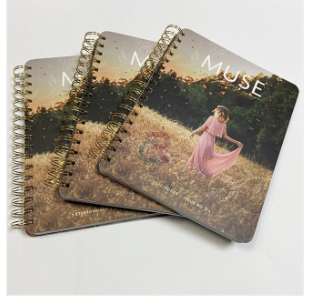Common Printing Techniques for Hardcover Book Printing
2025-07-08
Hardcover books are known for their durability, aesthetic appeal, and premium feel. The process of printing and producing a hardcover book involves a variety of specialized printing techniques that ensure high-quality results. These techniques influence not only the appearance and readability of the content but also the overall marketability of the book. Below is an overview of the most common printing techniques used in hardcover book production.
1. Offset Printing
Offset printing is the most widely used technique for hardcover books, particularly for large print runs. This method involves transferring ink from a plate to a rubber blanket and then onto the paper. Offset printing is preferred for its ability to produce consistently high-quality images and text. It allows for precise color control, sharp detail, and smooth gradients, making it ideal for both text-heavy books and those with rich graphics or illustrations.
2. Digital Printing
Digital printing is often used for short-run or print-on-demand (POD) hardcover books. Unlike offset printing, digital printing doesn't require plates, which reduces setup time and costs for small batches. Although the image quality is generally slightly lower than offset printing, advancements in digital technology have significantly improved its output. Digital printing is ideal for self-publishers, prototype books, or titles with niche audiences.
3. Foil Stamping
Foil stamping is a decorative technique used to apply metallic or pigmented foil to the cover of the book. Common colors include gold, silver, and copper. This method uses heat and pressure to transfer the foil onto the cover material, creating a shiny, eye-catching effect. Foil stamping is often used for titles, author names, or logos to enhance the visual impact of the book.

4. Embossing and Debossing
Embossing raises a design or text above the surface of the cover, while debossing presses it into the material. These techniques add a tactile dimension to hardcover books and are commonly combined with foil stamping for maximum visual appeal. They are often used for branding elements or special edition covers to give a luxurious feel.
5. UV Coating and Spot UV
UV coating is a clear liquid coating applied to the cover and cured with ultraviolet light. It provides a glossy or matte finish and protects the cover from scratches and smudges. Spot UV is a variation where only specific areas, such as the title or images, receive the coating. This contrast between coated and uncoated areas creates a visually dynamic effect.
6. Lamination
Lamination involves applying a thin plastic film over the cover to enhance durability and appearance. Gloss, matte, and soft-touch are common lamination finishes. Gloss lamination enhances color vibrancy, while matte gives a sophisticated, understated look. Soft-touch lamination offers a velvet-like texture that feels premium and resists fingerprints.
7. Binding Techniques
While not a printing method per se, binding is crucial in hardcover book production. The most common method is case binding, which involves sewing or gluing the pages together and attaching them to a hard cover (or case). Smyth-sewn binding, a form of case binding, is highly durable and allows the book to lie flat when open, making it a preferred choice for high-end hardcover books.
Conclusion
The choice of printing techniques for hardcover books significantly affects both the production cost and the reader's experience. Offset and digital printing dominate the internal content production, while foil stamping, embossing, UV coating, and lamination enhance the external presentation. Each technique has its own advantages, and combining them strategically can produce a hardcover book that is visually striking, durable, and tailored to its target audience. Whether for mass-market distribution or special collector’s editions, mastering these techniques is key to successful hardcover book printing.
As a professional manufacturer and supplier, we provide high-quality products. If you are interested in our products or have any questions, please feel free to contact us.


